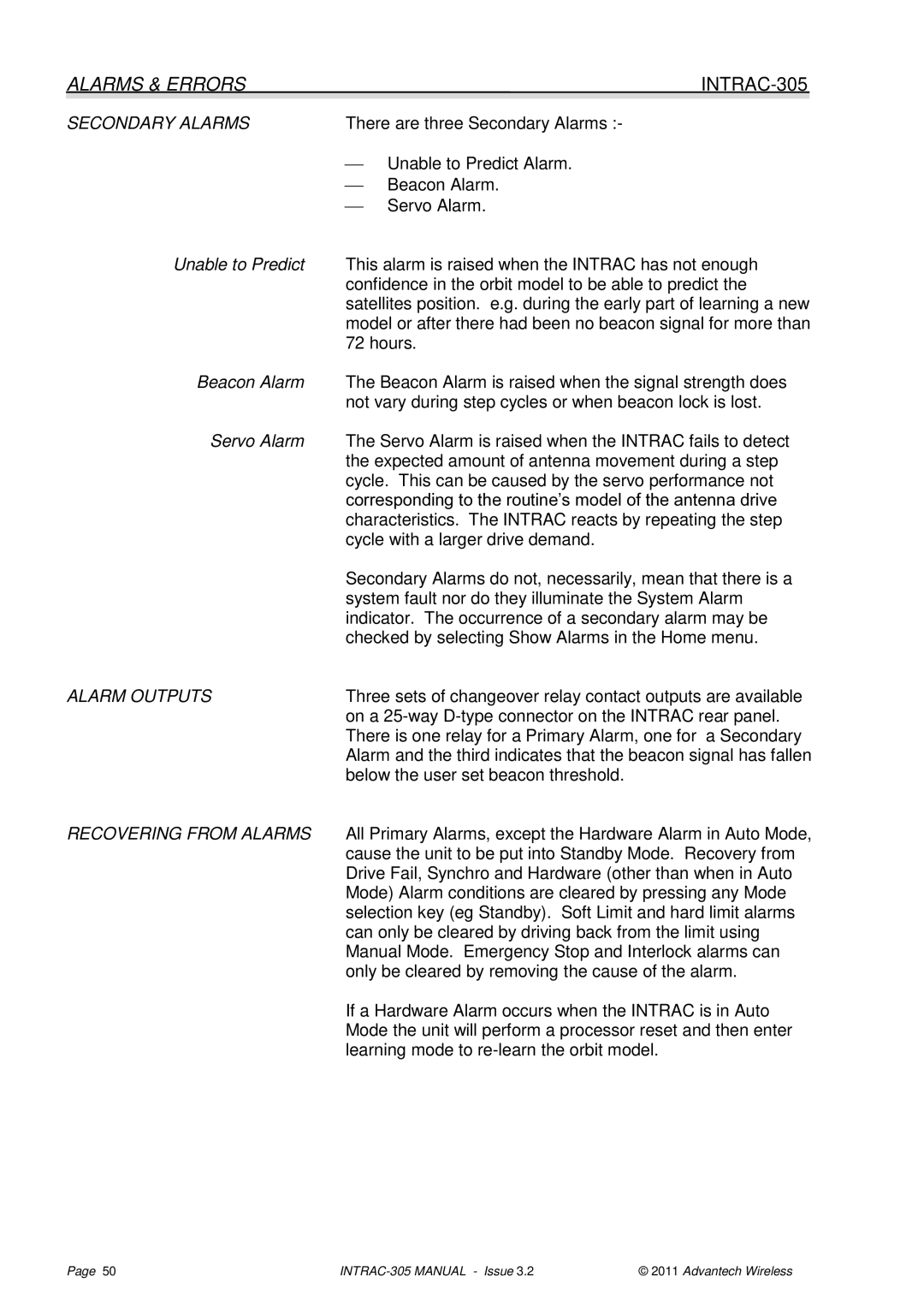ALARMS & ERRORS |
|
SECONDARY ALARMS | There are three Secondary Alarms :- |
⎯Unable to Predict Alarm.
⎯Beacon Alarm.
⎯Servo Alarm.
Unable to Predict | This alarm is raised when the INTRAC has not enough |
| confidence in the orbit model to be able to predict the |
| satellites position. e.g. during the early part of learning a new |
| model or after there had been no beacon signal for more than |
| 72 hours. |
Beacon Alarm | The Beacon Alarm is raised when the signal strength does |
| not vary during step cycles or when beacon lock is lost. |
Servo Alarm | The Servo Alarm is raised when the INTRAC fails to detect |
| the expected amount of antenna movement during a step |
| cycle. This can be caused by the servo performance not |
| corresponding to the routine’s model of the antenna drive |
| characteristics. The INTRAC reacts by repeating the step |
| cycle with a larger drive demand. |
| Secondary Alarms do not, necessarily, mean that there is a |
| system fault nor do they illuminate the System Alarm |
| indicator. The occurrence of a secondary alarm may be |
| checked by selecting Show Alarms in the Home menu. |
ALARM OUTPUTS | Three sets of changeover relay contact outputs are available |
| on a |
| There is one relay for a Primary Alarm, one for a Secondary |
| Alarm and the third indicates that the beacon signal has fallen |
| below the user set beacon threshold. |
RECOVERING FROM ALARMS | All Primary Alarms, except the Hardware Alarm in Auto Mode, |
| cause the unit to be put into Standby Mode. Recovery from |
| Drive Fail, Synchro and Hardware (other than when in Auto |
| Mode) Alarm conditions are cleared by pressing any Mode |
| selection key (eg Standby). Soft Limit and hard limit alarms |
| can only be cleared by driving back from the limit using |
| Manual Mode. Emergency Stop and Interlock alarms can |
| only be cleared by removing the cause of the alarm. |
| If a Hardware Alarm occurs when the INTRAC is in Auto |
| Mode the unit will perform a processor reset and then enter |
| learning mode to |
Page 50 | © 2011 Advantech Wireless |
